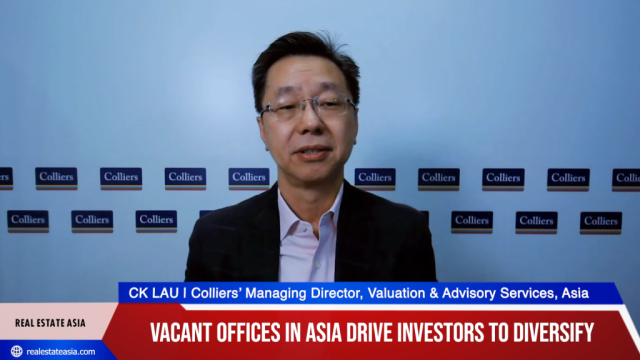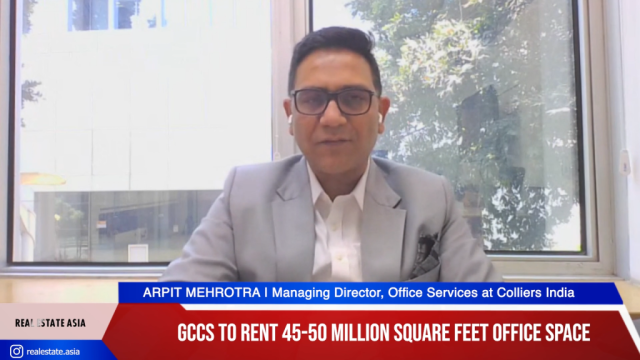
Flexibility and technology to drive a doubling in leasing activity: Colliers
These are necessary to understand the changes needed in the workplace.
The past year saw many landlords left with an oversupply of available space, with COVID-19 in full swing and many businesses switching to remote work to continue operations. It was only in the latter half of 2020 that companies adopted the idea of hybrid workplaces to accommodate employees who prefer working from the office and those that are unable to, or prefer not to, for various reasons.
This trend of having flexible working arrangements and hybrid workspaces is seen to continue from 2021 onwards, with many employees seeing the benefits of having flexibility of their own time. On the other end of the sphere, however, are employers who are seeking ways to maintain high productivity without forcing their entire workforce to return to the workplace as though COVID-19 had not happened.
Sam Harvey-Jones, Managing Director of Occupiers Services Asia at Colliers, said that this year is looking to be more promising as many employers are shifting to flexible workspaces, which includes offering employees the option of working back in a physical office.
“In Q2 and the rest of this year, we see a 96% uptick in leasing activity. That 96% increase would take us back to 2018 or 2019 levels, so there is definitely some light at the end of the tunnel,” he said.
“In 2020 leasing was down 50% across the region and supply outstripped demand by about 2.2 times. We saw the majority of people adapt to a work- from- home set-up. But there were also a series of continual breakouts throughout the year due to COVID-19, which meant the year was very stop start" he added.
Whilst this may be the case for many markets, it will not be the case for all of Asia.
“Some of those countries have dealt with the uncertainty caused by COVID-19 quite well. But as we saw with India in the last couple of weeks, some countries are still experiencing lockdowns. It is a very uncertain situation in general in terms of what we're seeing, but there is definitely some positivity as we come out of Q1,” he said.
Colliers released a study called “The Next Work Experience” earlier this year, which showed that the majority of employees from different age groups and industries in APAC prefer to go back into the office.
For employees aged 20 to 30 years old, 65% said that they prefer to have flexible workspaces. Meanwhile, 50% of those aged 40 and above said that they do not prefer this option.
Harvey-Jones said that it is important for senior management to understand the needs of their staff and the younger workforce to know how to navigate and plan their flexible working arrangements.
This shift to the “office of the future” will need a more open mindset to keep the company’s performance in top shape.
“Traditionally managers like to see their staff in front of them. So, there's a real mind shift here, around staff not being in the office day to day and how to manage this new remote working environment,” he said.
“Rather than having to check in with the team every day and have daily meetings, how do we get to a place whereby we trust people and really empower our staff to thrive in this new environment and help change the way of working in the future?” he added.
Tech driving demand
The movements in the technology sector are playing an important role in ramping up the demand in these office spaces. It was projected to have contributed about 25% of the increase in demand, as businesses open data centres and offices.
“Technology is trending as the biggest driver of demand. In most of the major markets in this region in India, Singapore, and China, we're seeing that upwards of 20% to 25% of all demand is coming from the technology sector,” he said.
As employees stay in work-from-home set-ups, cloud technology is being needed more than ever. Harvey-Jones projects that there will be a 30% growth in that sector YoY.
“We’re seeing a huge amount of activity from data centers across the region, including Singapore, Hong Kong, India, and China. More people are online. With more technology there is more need for cloud, and I think it's just going to continue,” he said.
Another aspect of why there will be an increase in leased office space this year is to attract top talent, especially in the technology sector. Here, companies will need to offer flexible options to make these younger employees more productive at work. The option, once available, must then be offered across the board to all age groups and types of employees.
“I think the number one takeaway for occupiers is how to create an environment whereby you can attract and retain talent. Particularly in the technology sector, there's a lot of competition to attract talent. This still hasn't gone away even though there's been a recession,” he said.
“The demographic consisting of ages 20-30 years old may want remote working and flexibility. The management should be able to provide that same privilege to individuals over 40,” he added.
‘Culture Clash’
Whilst businesses can adjust to going back to full operations in many parts of the world, despite having to shift to flexible working arrangements, the same may not be the case in Asia.
Harvey-Jones cited that office space continues to be in high demand in Asia, primarily because of the culture present in a number of countries in this region. Whilst counterparts in the West may adjust to having desks and good working conditions at home, the scenario differs in many parts of Asia.
“In Asia, people don't necessarily have the infrastructure behind them that allows them to be as productive in a home environment as they would be in the US or Europe, where the average person or the average family probably lives in a much bigger space,” he said.
“Urbanization has been a huge part of the Asian population growth and, therefore, people are living in smaller, flat-like environments, sometimes with up to two or three generations. You're not seeing that elsewhere, so it is important to be careful that we don't confuse what is happening in the mature Western markets and what is happening in Asia,” he added.
Currently, what he is seeing as an ideal scenario is for employers to offer the option of where to work to their employees. This will enable workers from Asia to work in the office many days of the week, but with the choice of working in other hubs or satellite options where possible.
“We saw that despite 83% of people wanting some sort of work-from -home option or flexibility, they still want to go into an office three or four times a week, or they want to go into a flexible workspace,” he said.
“What we're seeing occupiers looking at are a number of hybrid options. Do you go to a decentralized hub-and-spoke model where you have a headquarters in a CBD, or do you go into the suburbs or elsewhere where there is some sort of satellite office closer to residential areas?” he added.
As companies reduce their physical offices to adapt to the changing times, he sees this trend continuing to maintain healthy overall operations, especially for companies operating in different countries.
“What we are seeing now is that there are companies that are introducing global initiatives whereby you can buy global co-working space, which can be utilized in multiple markets across the world by your staff” he said.
He also shared the “Five Es” – Experience, Experiment, Educate, Embrace, Empower –which Colliers sees as the necessary steps for offices and occupiers to undertake in the future of work.
In Experience, the employer must think ‘employee first’. Business performance and employee needs must be balanced across physical and virtual work places and environments. This will lead to Experiment, where there will be a testing of new office designs and models.
This will lead to Educate wherein the priority placed for wellness must be communicated, in order to enable multiple ways of working through Embrace. Lastly, Empower culminates the 5 E’s through providing clarity and certainty so that offices may continue to operate in the “new normal”.
“What we're looking at here is how to help people through the evolution of the workplace. From an Experience perspective, how do you marry the virtual with the physical experience? In Experiment, this can be both from a technical and technology perspective, it is a matter of studying different markets, different cultures, different nuances, and how they will need experimentation to work out what is the best fit,” he said.
“To Educate is particularly key because you have people who shifted to working remotely telling us that they're super productive. We need to get hold of that feedback and assess how we can Embrace the two different needs of what the employee wants and what the business needs. Lastly, how do you empower employers to manage that process of making sure that people are on top of their business, measuring it, and holding people accountable, and giving them some autonomy to be successful,” he added.
Whilst Harvey-Jones believes that 80 to 85% of the office will remain as is, 15% or 20% will be based on more flexible workspaces or will include an increase in decentralized locations.
He concluded that there are a number of different operators who are all looking at this space to cater to different types of clients moving forward.
Photo courtesy of Colliers.























 Advertise
Advertise







